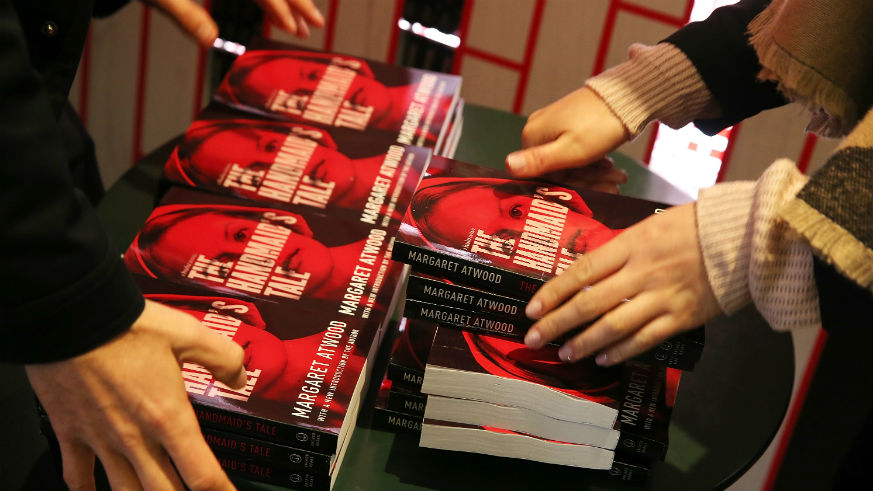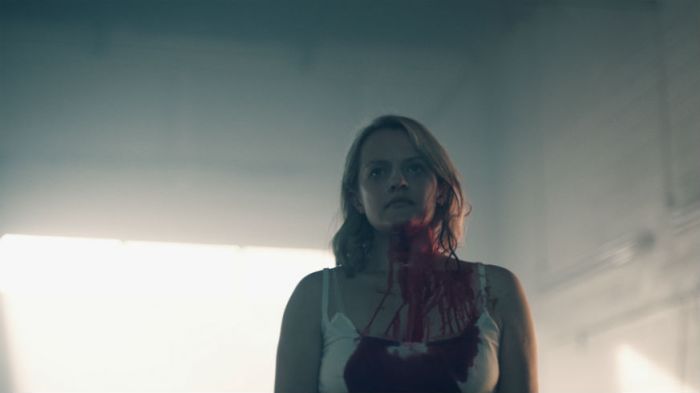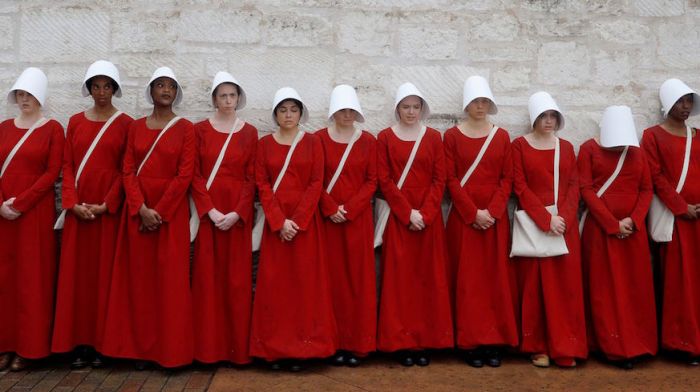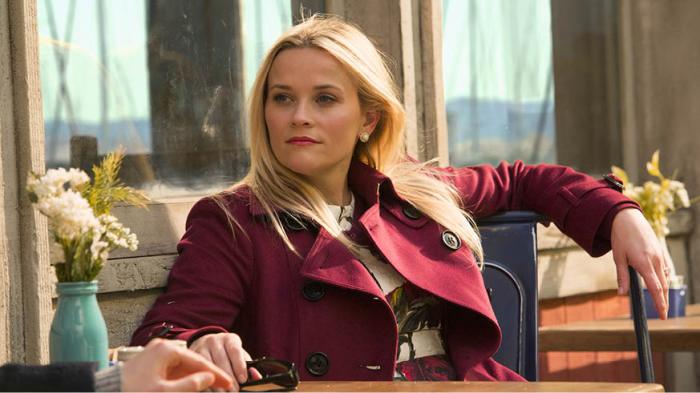You’re so consumed by Hulu original series The Handmaid’s Tale that names like Gilead and Offred roll off your tongue now like they’re your first language, but we’re sure you still have questions about The Handmaid’s Tale novel — the book that started it all.
After all, knowing The Handmaid’s Tale novel gives you some understanding about where the series will go — although there are no guarantees producers won’t deviate from the original details. So what’s the deal with the book, and could it shed light on some potential spoilers? We break down your burning questions.
Who wrote The Handmaid’s Tale?
So, who wrote The Handmaid’s Tale? Who can you credit as the creative genius behind your new favorite TV show? That would be Margaret Atwood, a proliferate Canadian poet and novelist who has managed to crank out 17 books of poetry, 16 novels, ten non-fiction books, eight short story collections, eight children’s books and one graphic novel. Whew.
And, yes, she’s alive and well and uses her Twitter account mostly for promoting charitable causes, although tweets about the Hulu original series based on her book do sneak into the feed from time to time. As they should.

When was The Handmaid’s Tale written?
The Handmaid’s Tale feels eerily familiar to some, reminding them of some unpleasant parts of modern society in America. That creepy feeling is just another feather in Atwood’s cap since The Handmaid’s Tale novel was published in 1985. The book is officially over 30 years old, but there’s something very 2018 about the story. Even Atwood herself says the TV adaptation wouldn’t have had the same reception had the 2016 presidential election worked out differently. “It would have worked as a show,” she told Variety about the TV series after a theoretical Hillary win, “but it wouldn’t have worked the same way.”
Although The Handmaid’s Tale novel certainly feels very currently American, Germany arguably played a bigger role in her writing than the U.S. “I started writing it in West Berlin in 1984. The wall was still in place. Because I was Canadian, we could go across to East Berlin, Czechoslovakia, and Poland, which we did. They were all Iron Curtain countries at the time,” she explained to Variety. “That definitely had an influence on the book, most particularly the feeling that people were very reluctant to talk to you until they absolutely trusted you and you were in a place that wasn’t bugged.”
But what you’re feeling is probably the effects of a rule Atwood had for the book that “nothing goes in that didn’t have a precedent in real life — somewhere, sometime.”
Where does The Handmaid’s Tale take place?
The Handmaid’s Tale novel takes place in a dystopian community called Gilead, or Republic of Gilead. It exists at an undetermined time in the future and occupies the territory of present day United States. It’s also a fundamentalist theonomy: Society is ruled by divine law, so essentially it’s a religious form of government that’s historically been associated with Christianity.
It’s also a highly segregated society. People are divided into groups that have social rankings and are forced to adhere to dress codes that announce where they stand in this hierarchy. Although there are many complex issues in the culture Atwood created in The Handmaid’s Tale novel, the one people focus most on is that in Gilead fertile women’s bodies are politicized and controlled by the state.
How does The Handmaid’s Tale end?
So, how does The Handmaid’s Tale end, and where can you expect the show to go? First of all, the ending of The Handmaid’s Tale novel can be thought of in two parts: Offred’s story, and the epilogue. Offred’s story ends abruptly when she’s taken away by the secret police of Gilead, called the Eyes of God or just “the Eyes” for short. She’s pregnant and has been sleeping with Nick, the Commander’s driver, despite being the Commander’s handmaid.
Nick tells Offred to trust “the Eyes” that take her away, claiming they’re members of an underground resistance movement called Mayday that’s working to overthrow the Republic of Gilead. It’s unclear to her, though, whether the officers are in fact Mayday members in disguise as secret police, or if Nick is an informant for the secret police who’s been playing her the whole time.

The Handmaid’s Tale novel than jumps ahead chronologically to 2195 in an epilogue that’s supposed to be “a partial transcript of the proceedings of the Twelfth Symposium on Gileadean Studies.” The symposium keynote speaker is discussing cassette tapes that were found with Offred’s story recorded on them, which were then transcribed and dubbed “the handmaid’s tale.” The speaker describes an unfruitful hunt for the characters described in the story and claims there’s no way to verify that they’re authentic.
But, the very fact that there were tapes to find means that Offred survived her meeting with the secret police — who must have truly been members of Mayday in disguise. The epilogue also suggests that the Republic of Gilead eventually collapsed and was replaced with a different, more equal society, though not the same United States that had once occupied the territory. It’s suggested that women’s rights are restored as well as freedom of religion.
So, where does that leave the Hulu original series? Well, showrunner Bruce Miller said there could be up to ten seasons of The Handmaid’s Tale produced, and that puts us into uncharted territory. The first season of the show blew through most of the plot of The Handmaid’s Tale novel and already showed some deviations, so everything’s new here on out. Atwood’s thoughts on the tentative plan: “Ten [seasons] sounds like an awful lot to me.”
























